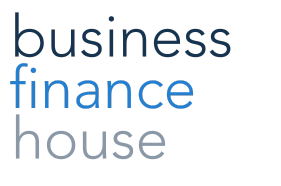When businesses need essential equipment or assets, they often face the crucial decision of whether to buy or lease. Leasing provides flexibility and cost savings, making it an attractive option. However, choosing between operating lease vs. finance lease requires a clear understanding of their key differences. Each type of lease comes with its own benefits, structures, and financial implications that can impact cash flow, ownership, and long-term business strategy.
In this blog, we’ll break down the differences between operating and finance leases, explore their advantages and drawbacks, and help you determine which leasing option best suits your business needs.
What Is an Operating Lease?
An operating lease is a short-to-medium term rental agreement where the business uses an asset but does not take ownership. The leasing company retains ownership and typically handles maintenance and disposal at the end of the lease term.
Key Features
- Lower monthly payments compared to finance leases.
- No ownership responsibility or risk of asset depreciation.
- Off-balance sheet financing, keeping liabilities low.
- Typically includes maintenance and servicing options.
- Flexible terms with the ability to upgrade or return equipment.
Common Uses
- Businesses needing the latest technology or equipment upgrades.
- Companies requiring temporary use of assets for specific projects.
- Industries that frequently update equipment, such as IT, healthcare and construction.
What Is a Finance Lease?
A finance lease, sometimes referred to as a capital lease, is a long-term contract in which the company assumes the risks and benefits of asset ownership. Businesses frequently have the choice to buy the asset for a small charge at the conclusion of the lease.
Key Features
- Higher monthly payments compared to operating leases.
- The lessee assumes responsibility for maintenance and insurance.
- Asset appears on the business’s balance sheet as an owned asset.
- Ideal for businesses needing long-term asset use without large upfront costs.
Common Uses
- Businesses looking for long-term equipment use with ownership benefits.
- Companies that require specialised or industry-specific machinery.
- Firms that prefer fixed costs for budgeting and tax benefits.

Key Differences Between Operating Lease and Finance Lease
| Aspect | Operating Lease | Finance Lease |
| Ownership | Asset remains with the lessor. | Ownership may transfer to the lessee. |
| Payment Structure | Lower monthly payments, often including maintenance. | Higher payments with an option to purchase. |
| Term Length | Generally shorter, flexible terms. | Typically longer terms aligned with asset life cycle. |
| Accounting Treatment | Treated as an operational expense on income statements. | Recorded as an asset and liability on the balance sheet. |
| End of Lease Options | Option to renew, return, or upgrade the asset. | Option to purchase or continue leasing. |
| Tax Implications | Lease payments fully deductible as a business expense. | Depreciation and interest payments may be tax-deductible. |
Pros and Cons of an Operating Lease
Pros
- Lower upfront costs and predictable monthly payments.
- Reduced financial risk since the asset is not owned.
- Flexibility to upgrade or change equipment easily.
- Typically includes maintenance and support.
Cons
- No asset ownership or equity-building potential.
- Long-term costs may exceed the asset’s purchase price.
- Equipment leasing options for customisation are limited.
Pros and Cons of a Finance Lease
Pros
- Business gains the financial benefits of ownership.
- Can be more cost-effective for long-term asset use.
- Fixed monthly payments simplify budgeting.
- Potential tax benefits through depreciation and interest deductions.
Cons
- Higher initial costs and long-term financial commitment.
- Business assumes responsibility for maintenance and repairs.
- Asset depreciation could impact resale value.
How to Choose Between an Operating Lease and a Finance Lease
-
Assess Your Business Needs
Consider how long you need the equipment and whether ownership is a priority. Short-term or frequently upgraded assets may be better suited to an operating lease, while long-term use often makes a finance lease more viable.
-
Consider Financial Impacts
Choosing between an operating lease vs. finance lease depends on whether you value lower upfront costs and flexibility or long-term ownership and financial stability.
-
Review Asset Type
Some assets, such as vehicles, IT, equipment and office technology, may benefit from an operating lease due to frequent updates. In contrast, heavy machinery and specialised tools often align better with finance leases.
-
Evaluate Flexibility Needs
If your business requires the ability to upgrade, scale or change equipment regularly, an operating lease provides the necessary flexibility. If you seek long-term stability and ultimate ownership, a financing lease is better.
The particular requirements of your company, your financial objectives and your long-term asset plans will all play a role in your decision between an operational lease and a finance lease. Both options have advantages, but by understanding their key differences, you can select the one that will benefit your company the most.
Business Finance House offers tailored business finance solutions. Our team of experts are here to assist you in meeting your company’s financing needs.






